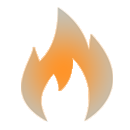Smoke Ventilation & Extraction Systems
Smoke ventilation and extraction systems play a vital role in a fire emergency. They prevent a build-up of smoke, heat and toxic gases, prolonging the tenability of the escape and rescue routes and increasing the time available for building occupants to escape, potentially saving lives.
The requirement to install automatic opening windows and vents for smoke ventilation is usually driven by Building Regulations, specifically Approved Document B.
The Regulatory Reform (Fire Safety) Order 2005 places a duty on the Responsible Person to maintain and service all fire safety systems. Recommendations and requirements for the maintenance and servicing regimes of smoke control systems are set out in current British Standards BS7346: Part 1, 1990, BS9999:2017, and BS-EN 12101. Following the guidance set out in the standards will demonstrate due diligence, although variations to the recommendations may be acceptable where they are justified by a risk assessment.
For example - On large multi-zone installations it might be acceptable, with agreement from the relevant authorities, to rotate the equipment tested so that a syatem is tested every week and individual items are operated at intervals of no more than three months.
Smoke Ventilation & Extraction System Testing
Weekly testing is recommended for smoke control systems that are required for means of escape. We offer a regular testing regime that simulates actuation of the system once a week ensuring that any fans and powered exhaust ventilators operate correctly, smoke dampers close (or open in some systems), natural exhaust ventilators open, automatic smoke curtains move into position and any other auxiliary devices operate correctly. Emergency power supplies (and systems that are not required for means of escape) should be tested monthly.
After actuation, the panel would be silenced and reset according to the procedures established at the initial fire safety system audit. Any faults would be recorded in the on-site log book and test reporting sheet.
Clear Reports & Records
Clear testing information would be distributed to you through monthly electronic reports with serious faults reported on the day they are identified. Inspection records are also held off-site so that you can call upon them in the event of a significant incident.
Smoke Ventilation & Extraction System Maintenance
In addition to regular testing, your smoke ventilation and extraction systems should also be regularly serviced to keep all components in full working order and ensure correct functioning in a fire emergency. Regular maintenance also helps extend the life cycle of your equipment, reducing long term cost whilst ensuring that you meet legal compliance requirements.
The recommended frequency of servicing varies dependent upon the type of system on site, however as a minimum, maintenance should be carried out annually.
We offer planned preventative maintenance regimes carried out by trained, competent engineers in line with the requirements of the relevant British Standards
During the site visit, the construction, fixings and all mechanical and electrical components will be checked, cleaned and adjusted as appropriate, and any necessary repairs identified. Any damage, wear, breakage or failure would be reported back to you and any remedial actions agreed.
Where possible and subject to part availability, we are happy to carry out any required repairs up to a pre-authorised repair allowance, during our scheduled maintenance visit. This will reduce the need for additional visits and their associated costs.
Find out More
If you have any questions, please give us a call. We will be happy to discuss your smoke ventilation and extraction system requirements and how a testing and maintenance regime can be implemented as quickly and smoothly as possible. Please call us on 020 7960 3939 for further details and advice.
 Fire Services
Fire Services
- Fire risk assessments
- Fire alarm testing
- Fire alarm maintenance
- Emergency light testing
- Extinguisher maintenance
- Technical consultancy
- Emergency plans
- Fire safety consultancy
- Sprinkler system testing
- Emergency light maintenance
- Fire evacuation drills
- Equipment installations
- Fire door inspections & Passive Fire Protection
- Additional combined services
- Smoke ventilation & extraction systems